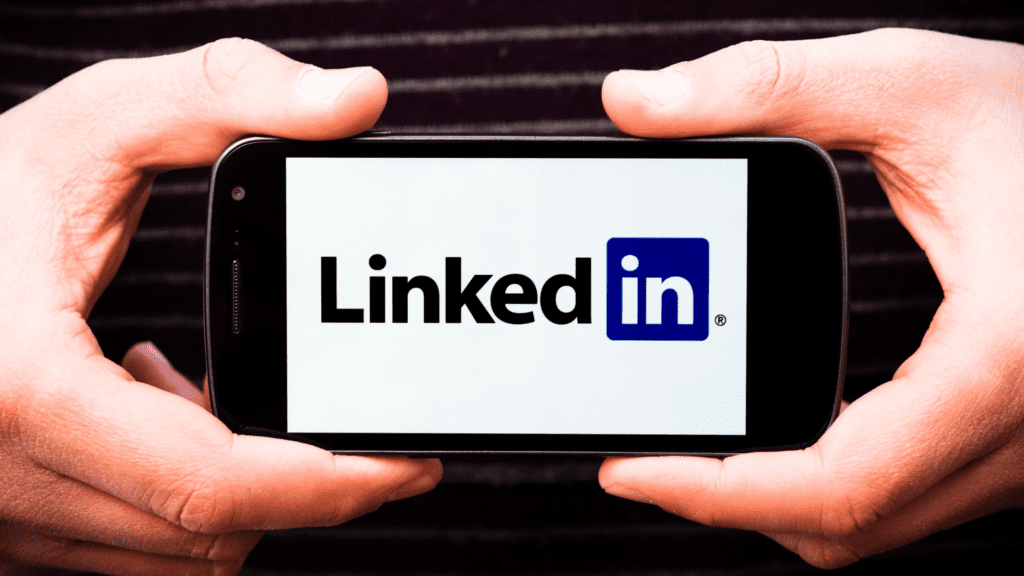Social media for B2B marketing is a comprehensive subject. In this article, I’ll go through the basics for B2B companies that have not yet started marketing on LinkedIn or Facebook.
The way you work with B2B sales can improve your presence on the right platforms, build your brand and eventually expand your network.
Social Media Marketing For Businesses
The first set of questions you should ask yourself if you have not already done so are:
- Which platforms do I want to be seen on? Where is my target audience? Since it is time-consuming to build a strong presence and a high level of commitment, it is important to focus the efforts on the right place. If your target audience is not present on a particular social media marketing platform, it is not worth investing any time in it.
- What is the purpose of my presence on the platform? What do I want to achieve with my social media marketing? There may be reasons to be present on several platforms but with different purposes. For example, you can have an overall strategy for LinkedIn and Facebook, because that’s where your buyers are. At the same time, you may have a strategy for Instagram in order to attract new employees. For many companies today, it is important to include employer branding in the marketing work to streamline and improve the recruitment work and strengthen the brand.
- Who should be responsible for the content of the platforms? In order to get results for your social media B2B marketing, a structured approach with continuity is needed.
You need to:
- continuously work with the publication of good content
- get the best reach and with the right people
- analyze which content gives the greatest commitment from your target group
Once you have formulated answers to these questions, it is time to move on with the selected platforms. To limit the scope of this article, I have selected Facebook & LinkedIn for the following sections, with more emphasis on the latter platform.
Social Media Marketing Platform
B2B Marketing With LinkedIn

LinkedIn is a professional platform that gives you the opportunity to strengthen the company’s position and brand among all the decision-makers.
It’s a strong and effective platform for B2B marketers to:
- drive sales
- expand networks
- create relationships
- build authority in the industry
This is definitely a platform you should have a strong presence on if you are in B2B, so prioritize it for your social media marketing campaigns.
Build A Personal Brand And Trust
A big advantage of LinkedIn is the ability to build your personal brand that also elevates the company’s brand.
For a company, what matters the most is the people who run it, their passions, skills, and qualities. B2B clients are also people who do business with others.
When both employees and companies are present on the same platform, it provides a huge advantage in building trust and relationships. You get to meet the decision-makers who are trying to choose the right partner or supplier.
5 Tips For Creating Personal Posts
- Think about purpose and content. Why do I want to share this? What does it bring to the people in my network? Why is this interesting for them to participate in? This does not mean that all posts need to be comprehensive or require you to spend a lot of time creating them. But the posts you create should provide value to your network and should not be just for your own benefit.
- Be yourself. Genuine posts build a lot of trust with your network. So, create posts about things that have happened to you, and use your own words.
- Be generous with sharing insights, knowledge, methods, or tips that you would appreciate yourself. If it is helpful for one person, it is probably useful for more people.
- Try to diversify, both in content and scope. Switch between long and short posts. Mix up the content so that some of the posts are about your own insight, reflection, or event that you want to share. Sometimes, you may want to highlight the company or coworkers in your post. People have different roles, and you can show it through different angles in your posts. This can be quite powerful in building trust and relationships with your network.
- Reach out to your network with your post. In order to spread the word about your post, it is necessary to get your network involved. This could be in the form of likes, shares, or comments. Ask a question in your post that you think your network wants to answer. Or tag a co-worker, customer, or partner that is relevant to your post. It provides the opportunity to be seen in their network. This is good for your brand and can be helpful in getting more contacts. But be clear about why you are tagging them. Do not use this for your own benefit because it would have the opposite effect on your brand.
Bonus Tip
If you want to share your company’s post from your personal profile: Find a new angle for the post that the company has created or add something new to it. Try to look at the content from a different point of view. Highlight something personal to add another dimension to what was already shared.
What Type Of Content Works Best For B2B Marketing With LinkedIn?
The content you create for LinkedIn should be informational and inspiring. There should be enough value for your network to get engaged with what you publish. They should be happy to get involved in your content by liking, sharing, and commenting on them.
But do not get too caught up with the analytics, even if they can give you a good insight into what content resonates well with your audience. The most important thing is to have a good message and to reach your target group.
Which Format Should Be Used On LinkedIn?
The members of LinkedIn generally prefer longer and more educational content. A good guideline is to stick with 80-120 characters for your posts. Also, including an image or video is preferable to just text. The recommended image size is 1200 x 627 pixels.
Social Media Marketing For Facebook

Even though Facebook does not have the same professional focus, many of your decision-makers are still on this platform.
To increase your brand awareness, you should therefore also have a presence on Facebook. It gives more opportunities for your target group to interact with your content and brand. People also show different behavior and attitude on different platforms.
Some decision-makers are difficult to reach through the noise on LinkedIn. Instead, you could try to reach them through other channels to build trust, which may open some doors.
The environment is different from a professional social media marketing platform like LinkedIn. This gives you the opportunity to showcase your brand through a different lens and values.
You can create content that aims to:
- entertain and inspire the audience
- be humorous
- highlight a current topic
- make a statement to show what values the company stands for
The audience prefers content that is easy to absorb and visually appealing. If the company was a person, what would it be like? This is the tone you should keep in mind when coming up with content ideas.
Which Format Works The Best For B2B Marketing On Facebook?
Facebook users are there to see what other people are doing, to be entertained and inspired. Here you should keep a lighter tone than on LinkedIn. Shorter texts work better than long ones, so aim for about 40 characters for your texts.
Text alone does not work very well. So, try to use interesting images (preferably in the form of gifs) or even videos. A carousel with several images that the user can browse through also works well. The standard posts should have an image size of 1200 x 630 pixels.
How To Present The Company On The Social Media Marketing Platform

The first thing you need to do is to set up a company page. If you already have one, it may be a good idea to go through it again and make sure that it is up to date and complete.
Improve Your Business Page
- Upload a logo (Facebook: 180 x 180 pixels, LinkedIn: 300 x 300 pixels).
- Upload an image or video that is visible at the top of your business page (Facebook: 820 x 312 pixels, LinkedIn: 1536 x 768 pixels). This is the first thing that people see on the page, so make sure that it conveys your brand in the best possible manner. You can replace it at any time, so it is possible to upload an image for a brief period to highlight a current and important event.
- Have a CTA button (call-to-action, i.e., what you want the visitor to do). It could lead to a specific page of your website, such as a contact page.
- Company description. Here you can describe the company’s products and services. Keep SEO in mind while writing your business description. Include the focus keywords that you want to rank for in the search engines.
- List your specialties to show clearly what your company’s focus and expertise are.
Posts On The Company Page
You should first have a certain number of posts that helps visitors to understand the company’s focus and get an idea of what the company stands for. If your company page is completely blank, you should create some posts with existing content from your website.
Connect The Employees With The Company
Ask all employees to follow the company page – it will be visible in their network. When they follow the page, it makes it easier to find content to share with their network.
When it comes to LinkedIn, it would be great if all employees have a profile that describes and shows the company in the best manner. Because as I mentioned earlier, personal brands are an important part of B2B social media marketing.
They can add the company page to their own profile under Experiences, where they can also add relevant links to the website related to the area in which they work, or a product they specialize in.
You could try to achieve a uniform look for all the employee profiles. It is a good idea to provide them with the top picture and description of the company and show them how to update their profiles.
Create A Social Media Marketing Plan
By now, you should have decided the platforms you should focus on to build your presence. You might have some insights on what type of content you should share. You also should have set up company pages that give a good impression of your business. Then it’s time to be more specific and come up with a social media marketing plan for your publishing schedule.
Add A Structure
Here are some things you should consider for your planning:
- How many posts are you planning to create each week? Set a goal of posting at least 3 per day. But remember that quality takes precedence over quantity.
- How should you vary your posts? You should have a social media marketing plan for your content in different formats such as text, images, and gifs. This way you’ll have more variety in the content to share with your followers. It also increases the likelihood for your audience to consume your content.
- What should you say and how should you say it? Write down some of your own guidelines on how to adapt the content for each social media marketing platform.
- When should you publish your posts? You should always aim to publish during the days and times when the maximum number of people are active. Hubspot has collected data with some general statistics. It would be even better if you can analyze your own target group’s presence on the platforms.
Publishing Calendar For Digital B2B Marketing

Make a foundational plan for your social media B2B marketing. For example, you should post at least 3 times a week on every channel.
Plan ahead and keep the communication clear so that you are consistent with your message and the design profile. This way you will be able to build brand awareness.
Tip: Do not publish on multiple platforms at the same time with the same content. Spread it out to increase your brand’s presence. Also, publish it during the days and times when your target group is most active on each platform.
Streamline Publishing With HubSpot
HubSpot is an inbound platform that connects marketing, sales, and customer service in one tool to facilitate a customer-centric approach to work.
The tool has a function for creating posts for LinkedIn, Facebook, and Instagram and for scheduling them. It allows you to create multiple posts at the same time, which helps you to save time on creating content. You don’t want to be in a situation where you need to get something out and do not know what to share.
It is more efficient since it helps you plan your posts with scheduling options. The tool shows all published or planned posts on your various platforms, including a calendar view. It is also easier to make the content cohesive, by following a certain theme or a logical sequence where the posts are made as a series.
Building A Relationship On Social Media For B2B Marketing
To systematically use social media for B2B marketing to communicate and interact with potential customers for sales is called social selling. Interactions form the basis of social selling, because it is about building a relationship, and it usually begins with a conversation.
To initiate a dialogue, you can:
- share your knowledge and experience through your own posts
- join relevant groups
- comment on relevant posts on your potential customers’ social networks
- answer questions
- provide your input in discussions about the topic or industry that you operate in or want to build an authority in
Social selling thus means that you work methodically:
- for your potential customers to see you
- gain confidence in your skills
- develop it into a conversation and relationship that you can take further on other channels
With social selling, in the short term, you can get a chance to interact with your potential customers. In the long term, you will be able to build authority in the area where you are perceived as an expert.
At the same time, with this method, your network will grow faster over time. So, you get more contacts and initiate more conversations with potential customers.
However, this is a long-term approach that takes time, patience, and consistency. You must plan for it, set aside some time for it every day, and work on it for a long period of time.
